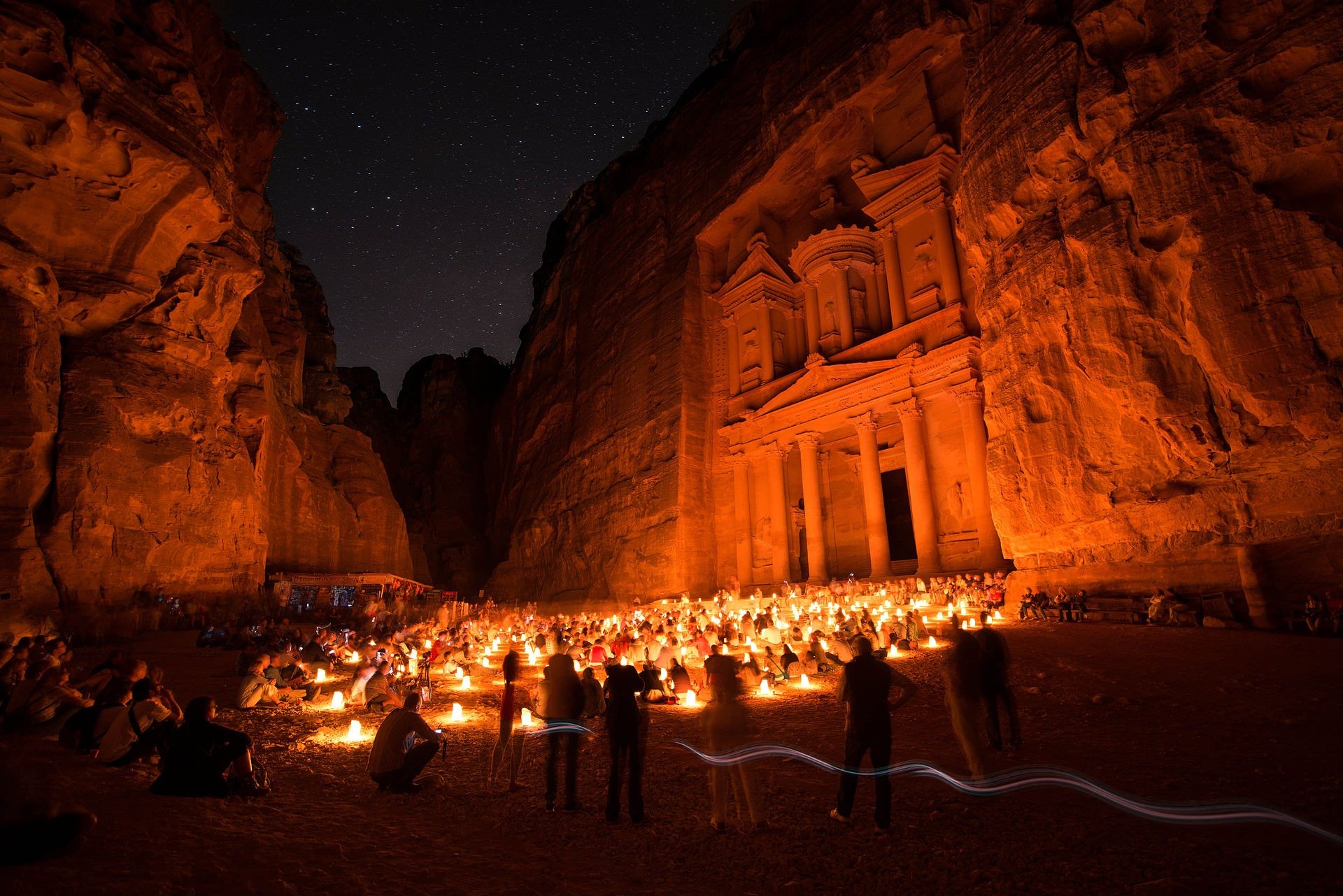Did An Egyptian Pharaoh Hide His Wealth In Al-Khazneh In Petra, The Rose City?
Hidden in the mountains of southern Jordan, Petra is an ancient city known for its stunning architecture carved into rose-red cliffs.
This city, once the capital of the Nabatean Kingdom, was a bustling hub for traders.
At the center of Petra is Al-Khazneh, or “The Treasury,” a beautiful structure that continues to fascinate visitors.
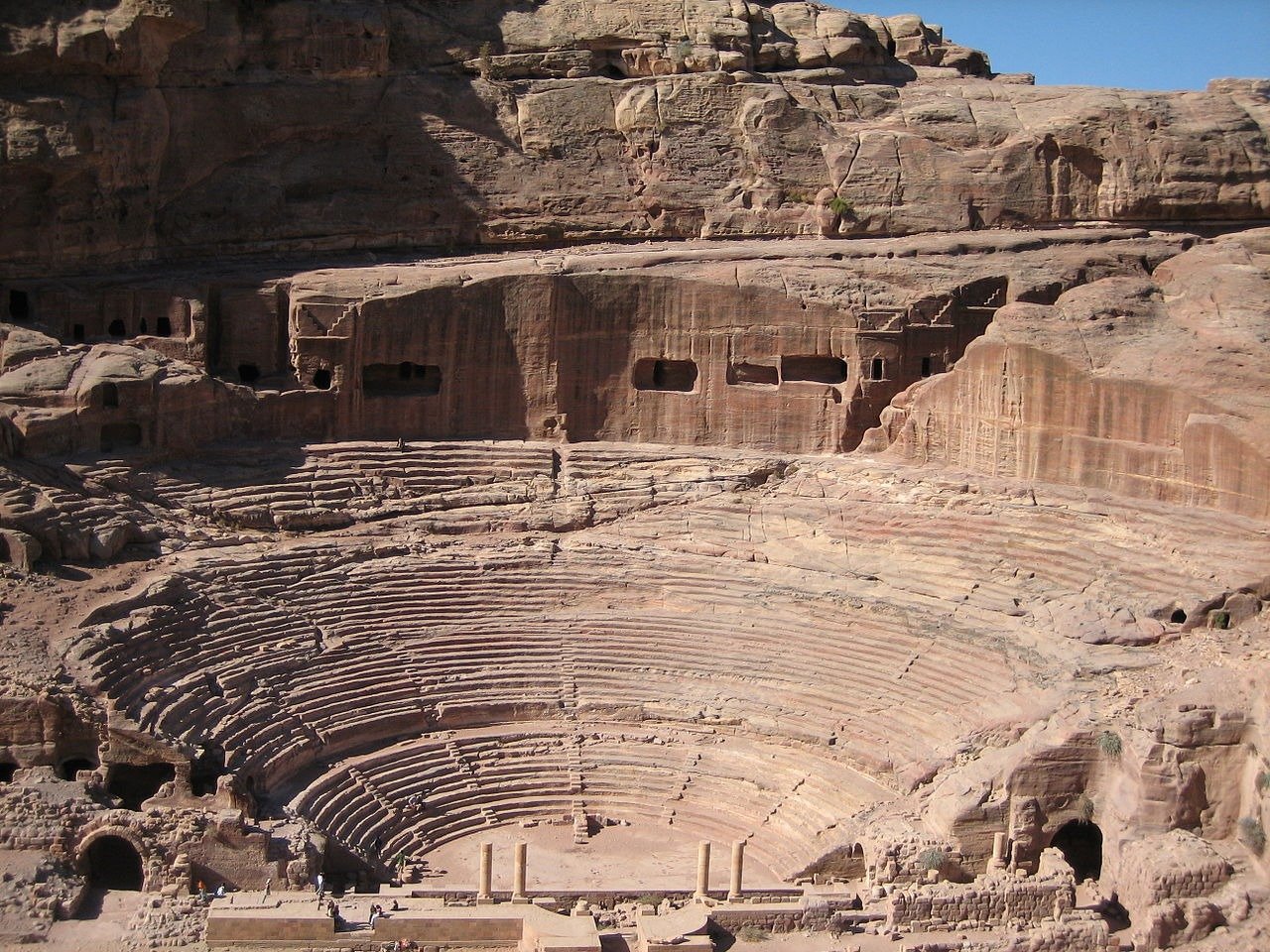
The Rose City of Petra
Petra is often called the “Rose City” because of its pink-hued stone from which it is carved.
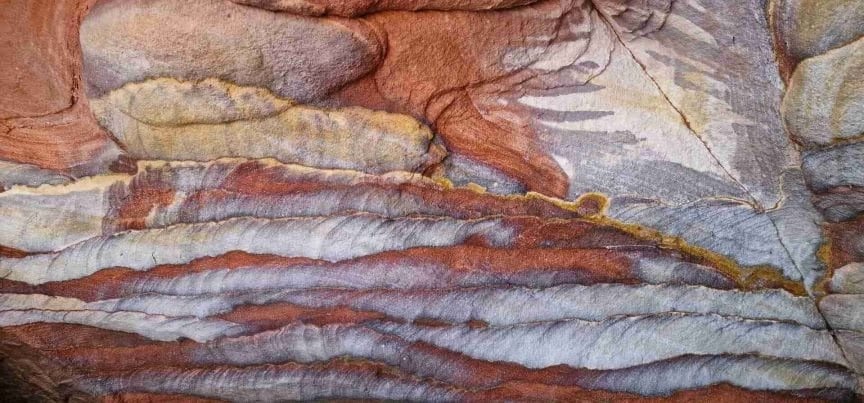
The city was founded in the 4th century BC as the capital of the Nabatean Kingdom.
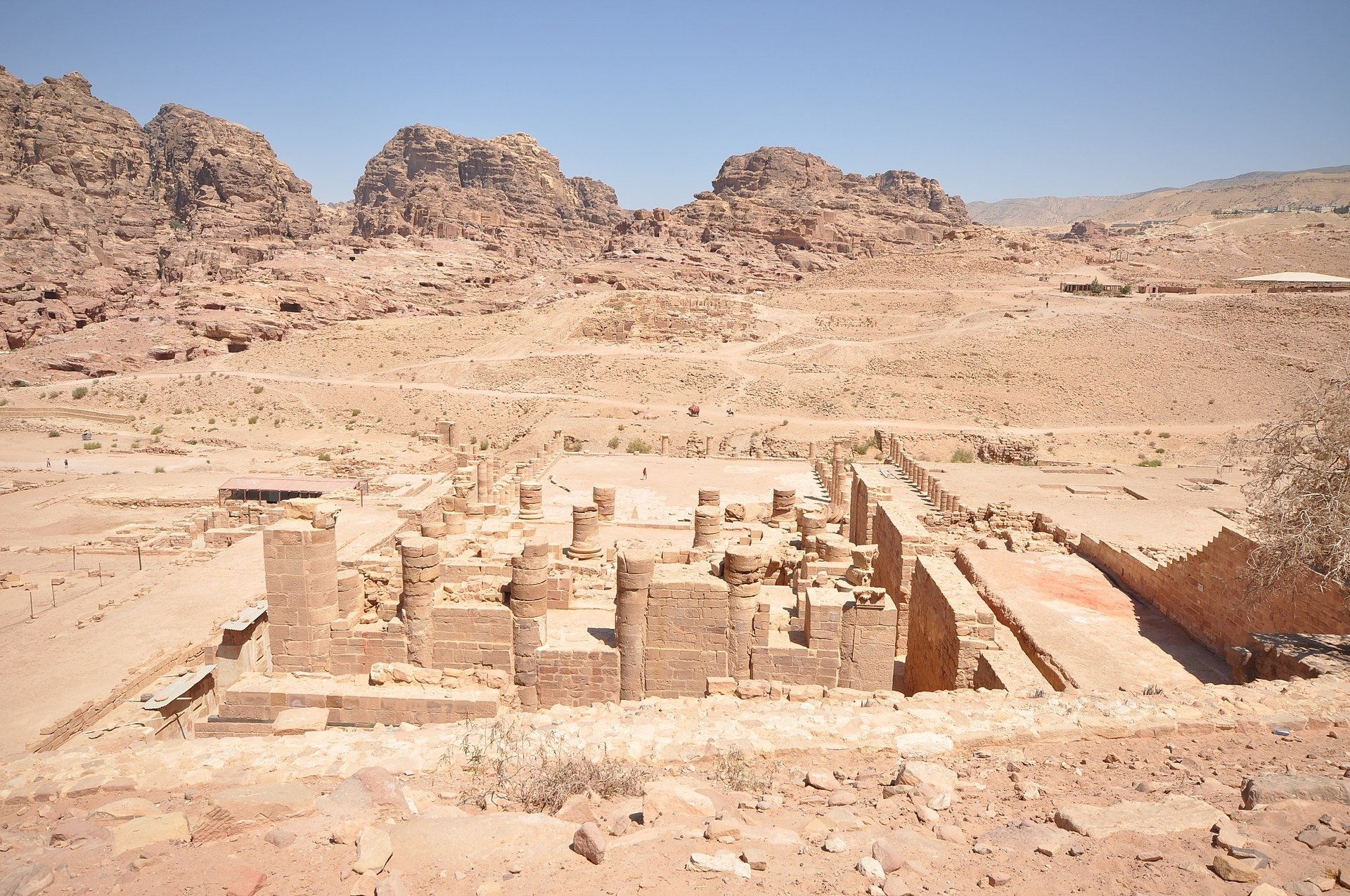
Petra flourished as a hub for merchants traveling the trade routes between Arabia, Egypt, and the Mediterranean.
The Nabateans, who built Petra, were skilled in water conservation, allowing the city to flourish in the desert.
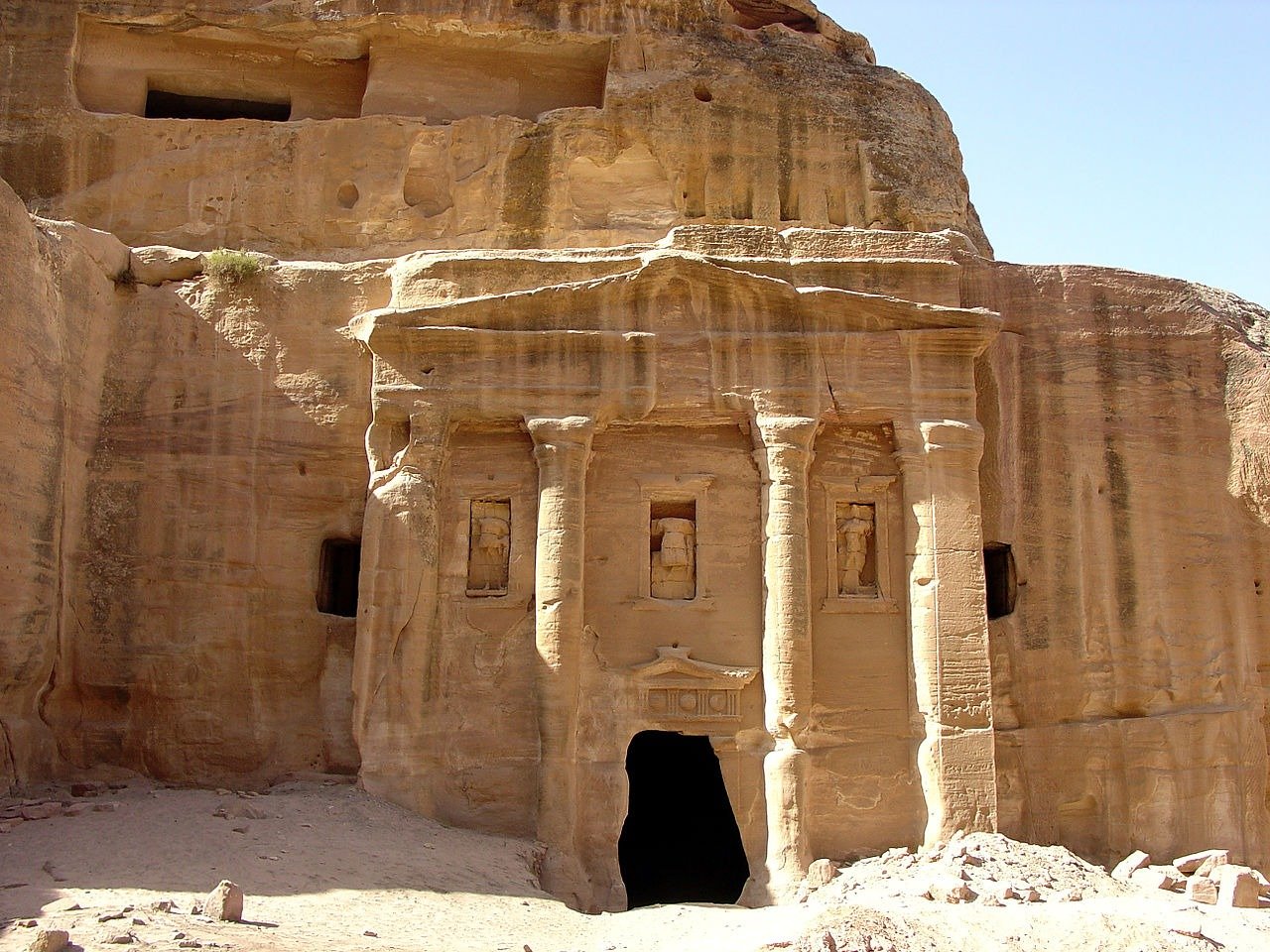
The city was rediscovered by Swiss explorer Johann Ludwig Burckhardt in 1812.
Petra has since been a focal point for archaeologists, historians, and tourists.
Its monumental structures, such as the Monastery (Ad Deir), the Royal Tombs, and the Roman Theater, show the Nabateans’ impressive building skills.
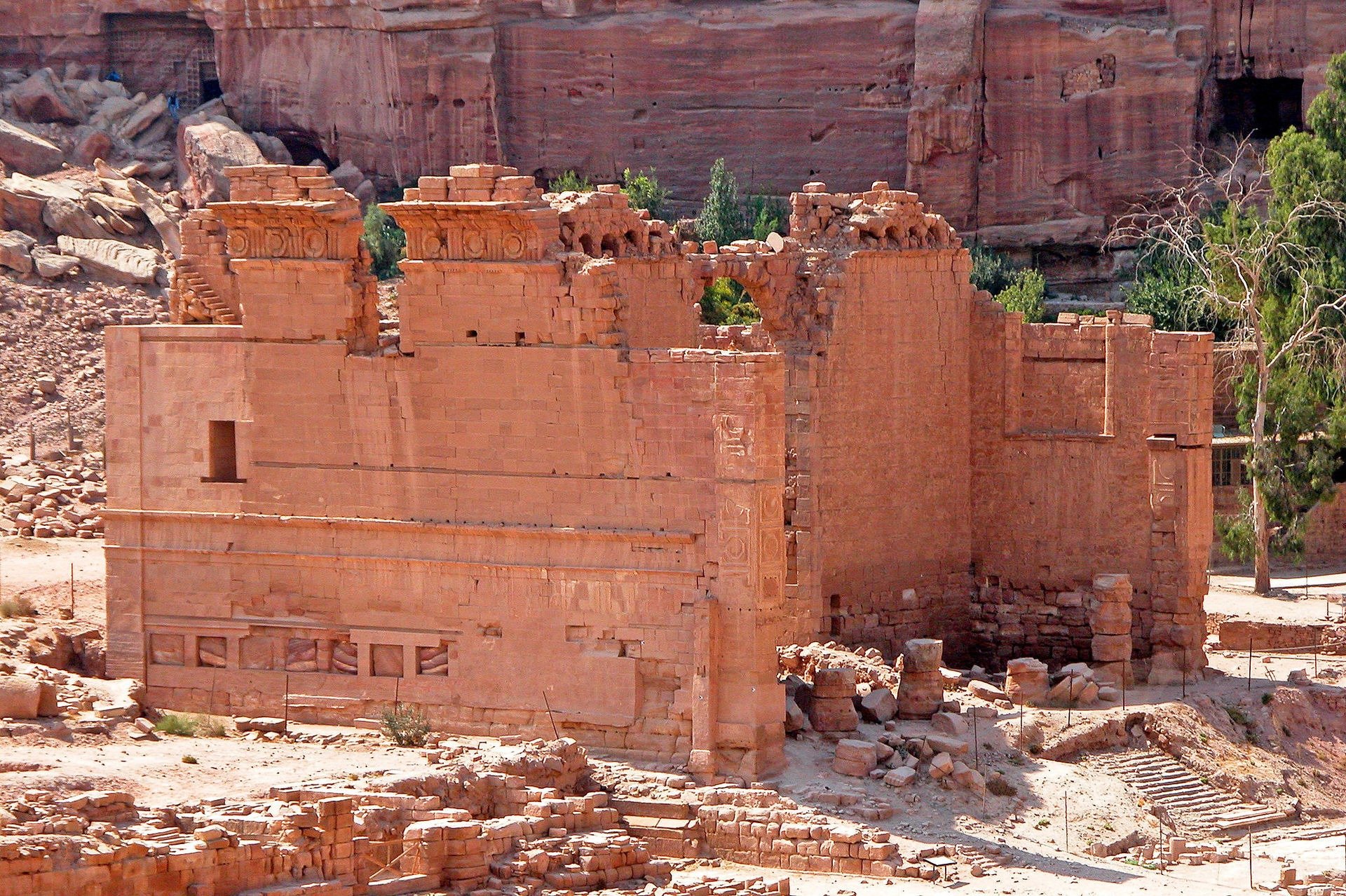
Petra’s sophisticated Water System
One of Petra’s most remarkable features is its sophisticated water management system developed by the Nabateans.
In a region with scarce water resources, they constructed an intricate network of dams, cisterns, and aqueducts to collect, store, and distribute water.
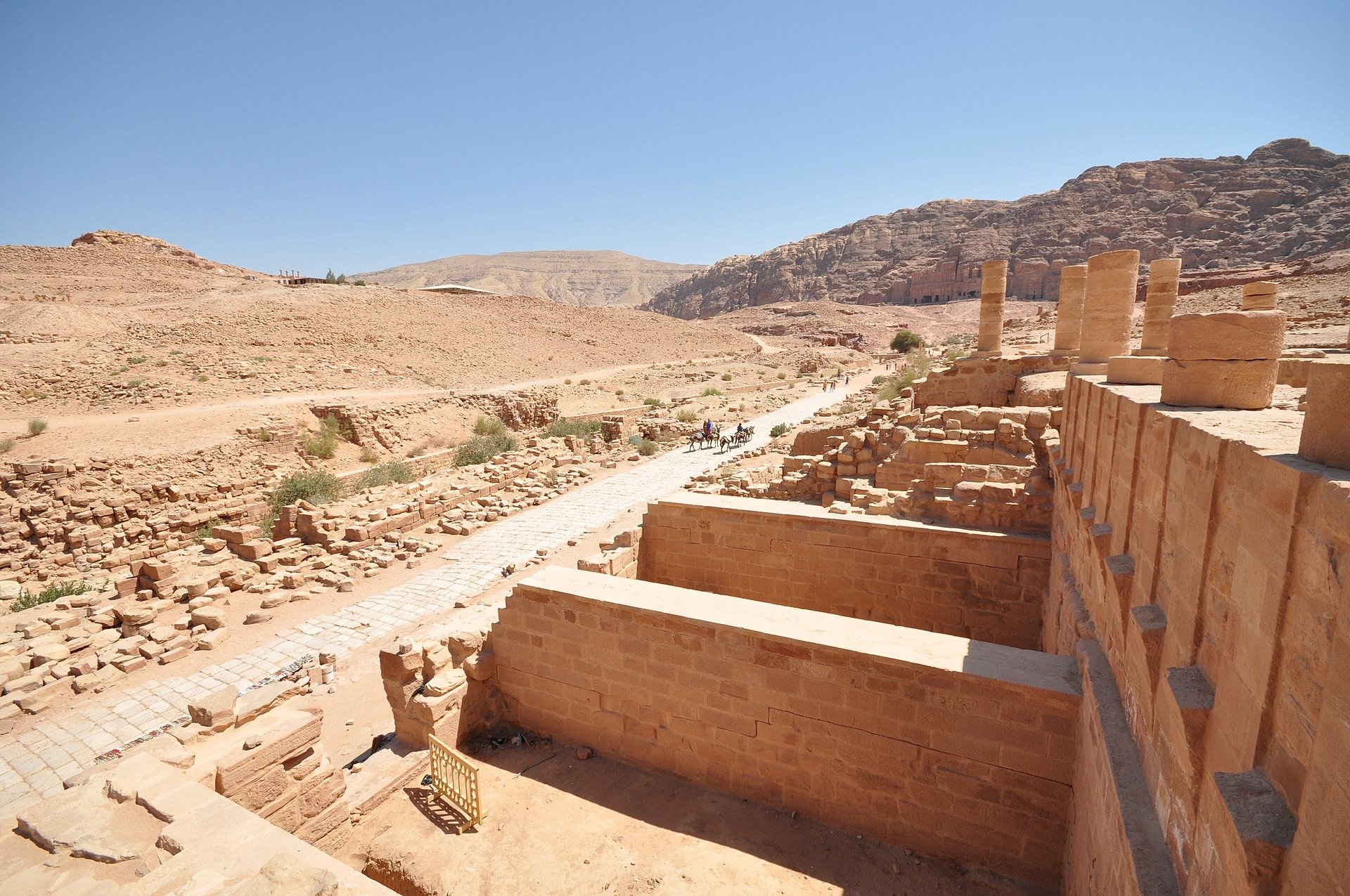
This system ensured a reliable water supply for the city’s inhabitants and supported agriculture, making Petra a green oasis in the desert.
The Nabateans also built channels to divert flash floods away from the city, protecting it from potential devastation.
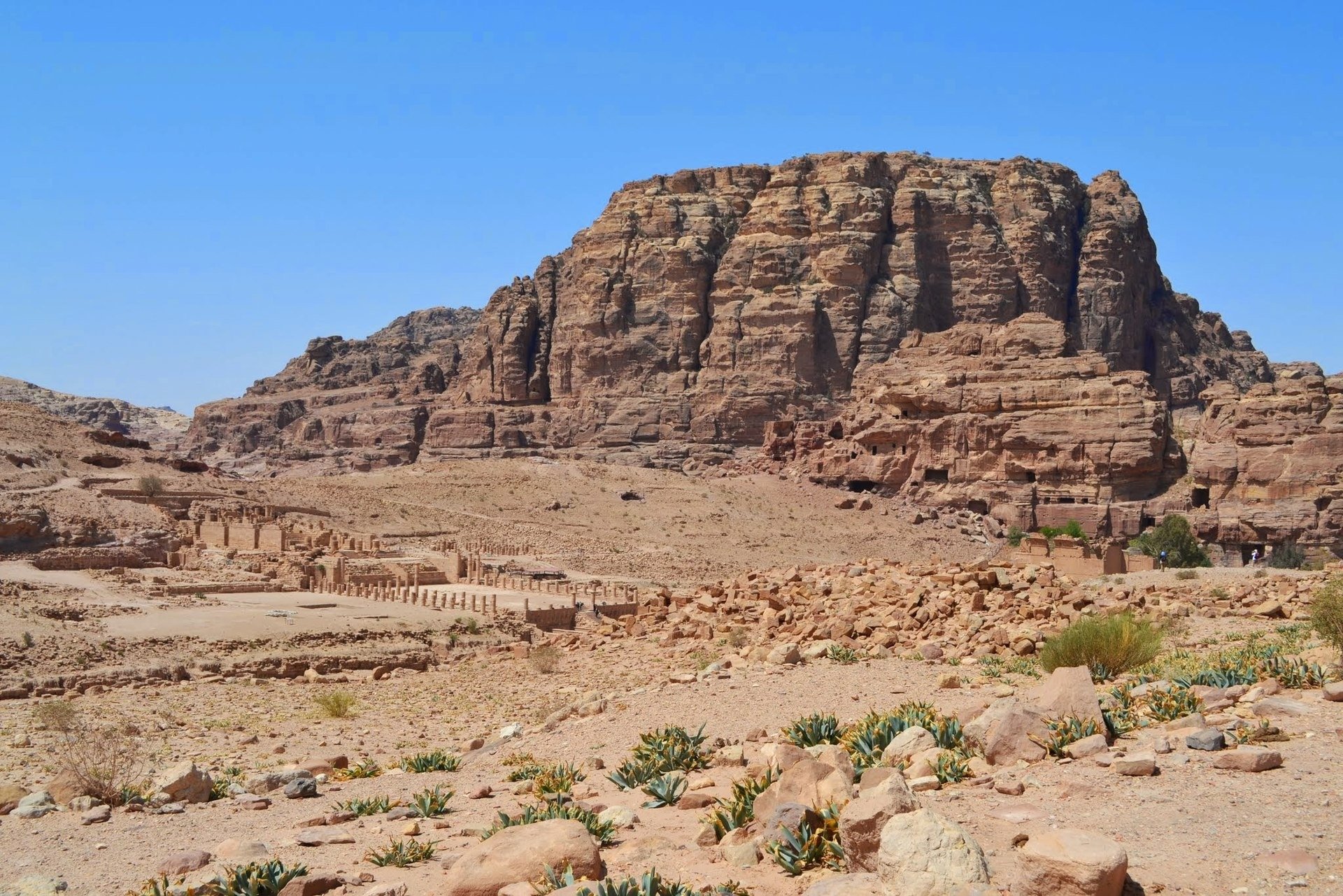
Architectural Marvels of Petra
Petra’s vast expanse is dotted with hundreds of tombs, temples, and other structures carved into the cliffs.
The Siq
One of the most remarkable is the Siq, a narrow, winding gorge that serves as the main entrance to the city.

Flanked by towering rock walls that reach up to 80 meters high, the Siq creates a dramatic and awe-inspiring approach to Petra.
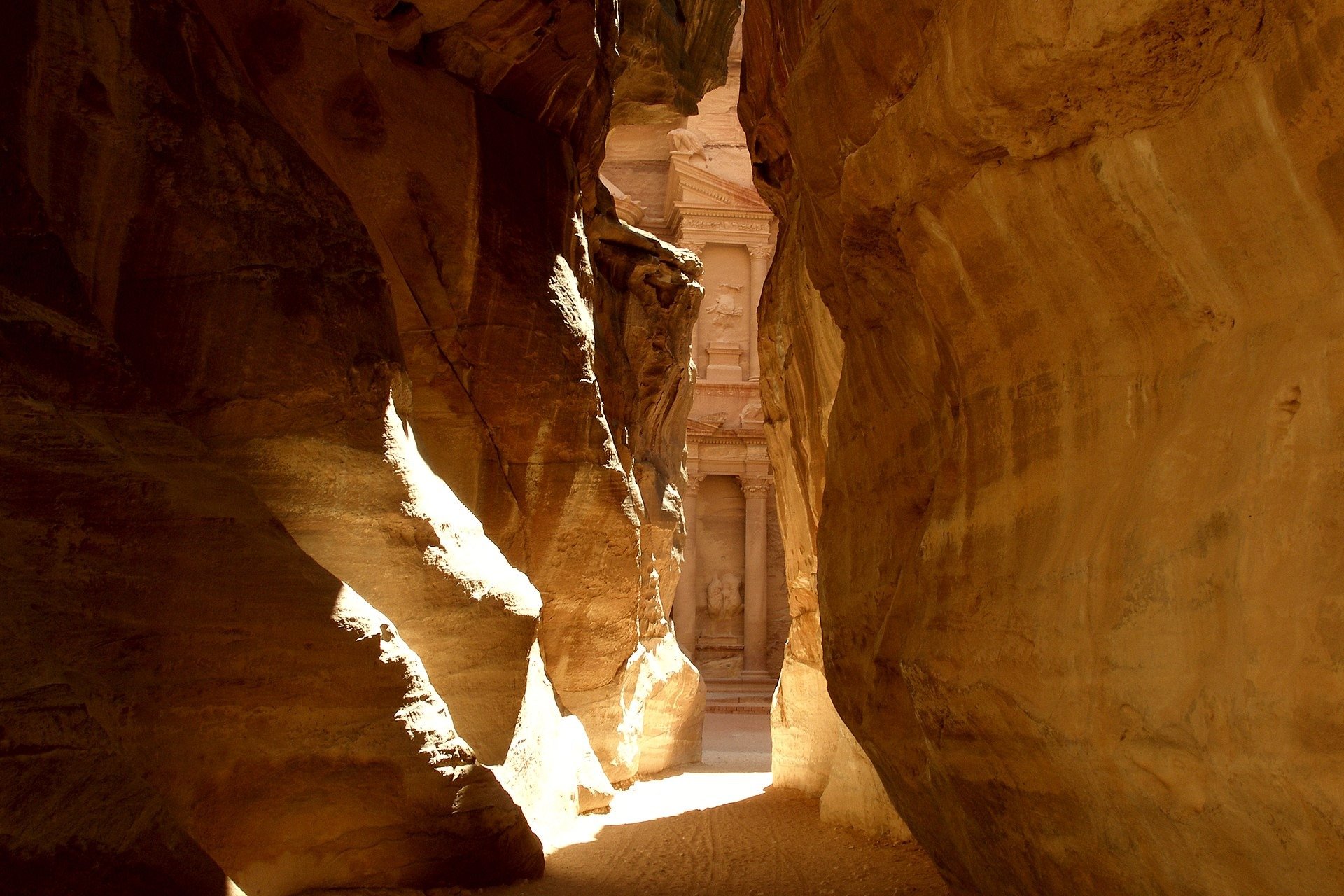
The Monastery (Ad Deir)
The Monastery (Ad Deir), similar in design to Al-Khazneh but larger in scale, is another of Petra’s iconic structures.
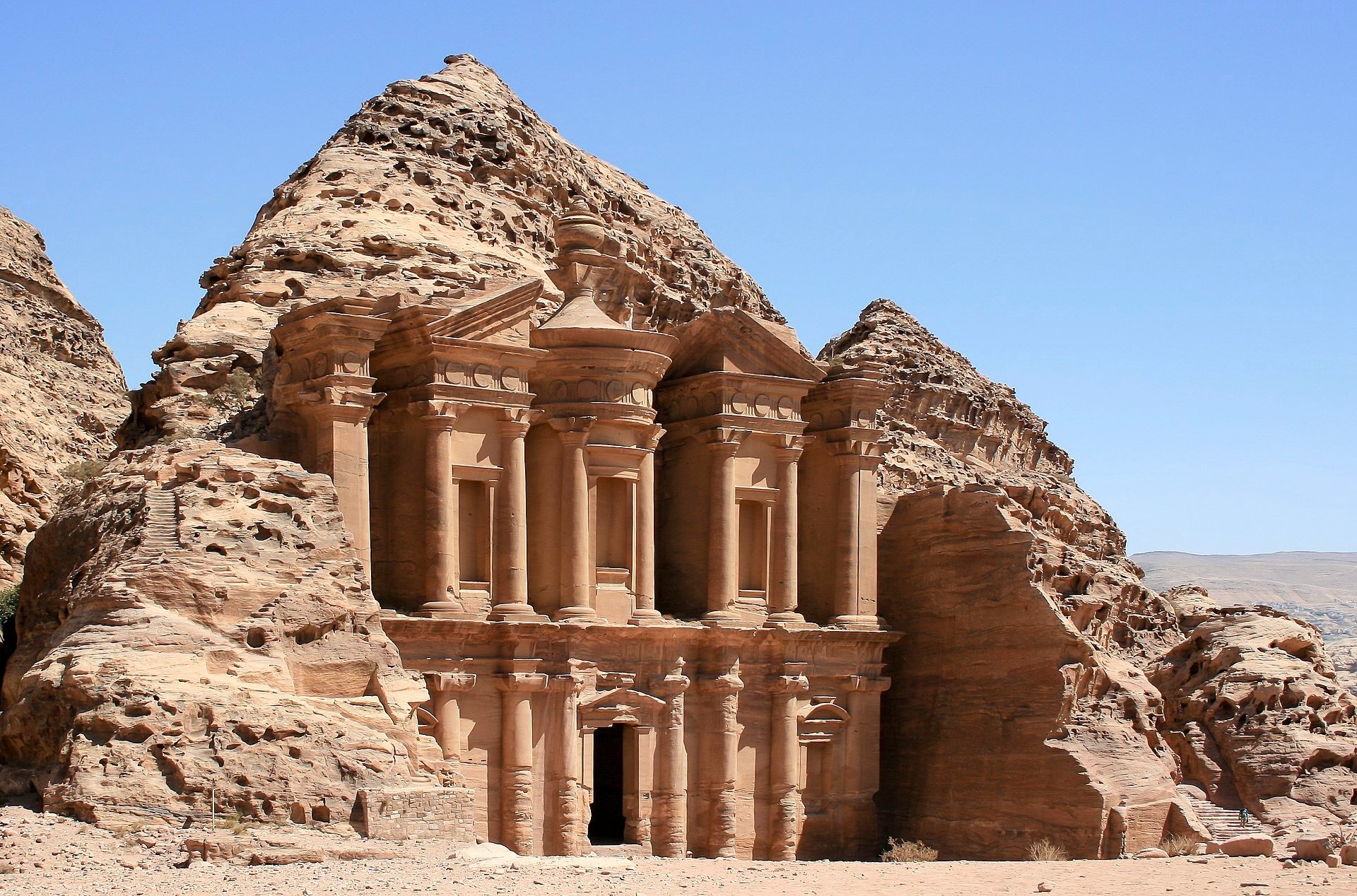
Perched on a hilltop, it requires a challenging climb of nearly 800 steps to reach but rewards visitors with breathtaking views of the surrounding landscape.
The Monastery’s name is somewhat misleading, as it is believed to have been a Nabatean temple before being repurposed as a Christian monastery in the Byzantine period.
Al-Khazneh: The Treasury
Among Petra’s many wonders, Al-Khazneh, or “The Treasury,” stands out as the most iconic and elaborately decorated.
Carved directly into a sandstone cliff, Al-Khazneh is believed to have been constructed in the early 1st century AD during the reign of Aretas IV Philopatris.
While its exact purpose remains a subject of debate, it is widely thought to have served as a mausoleum and crypt.
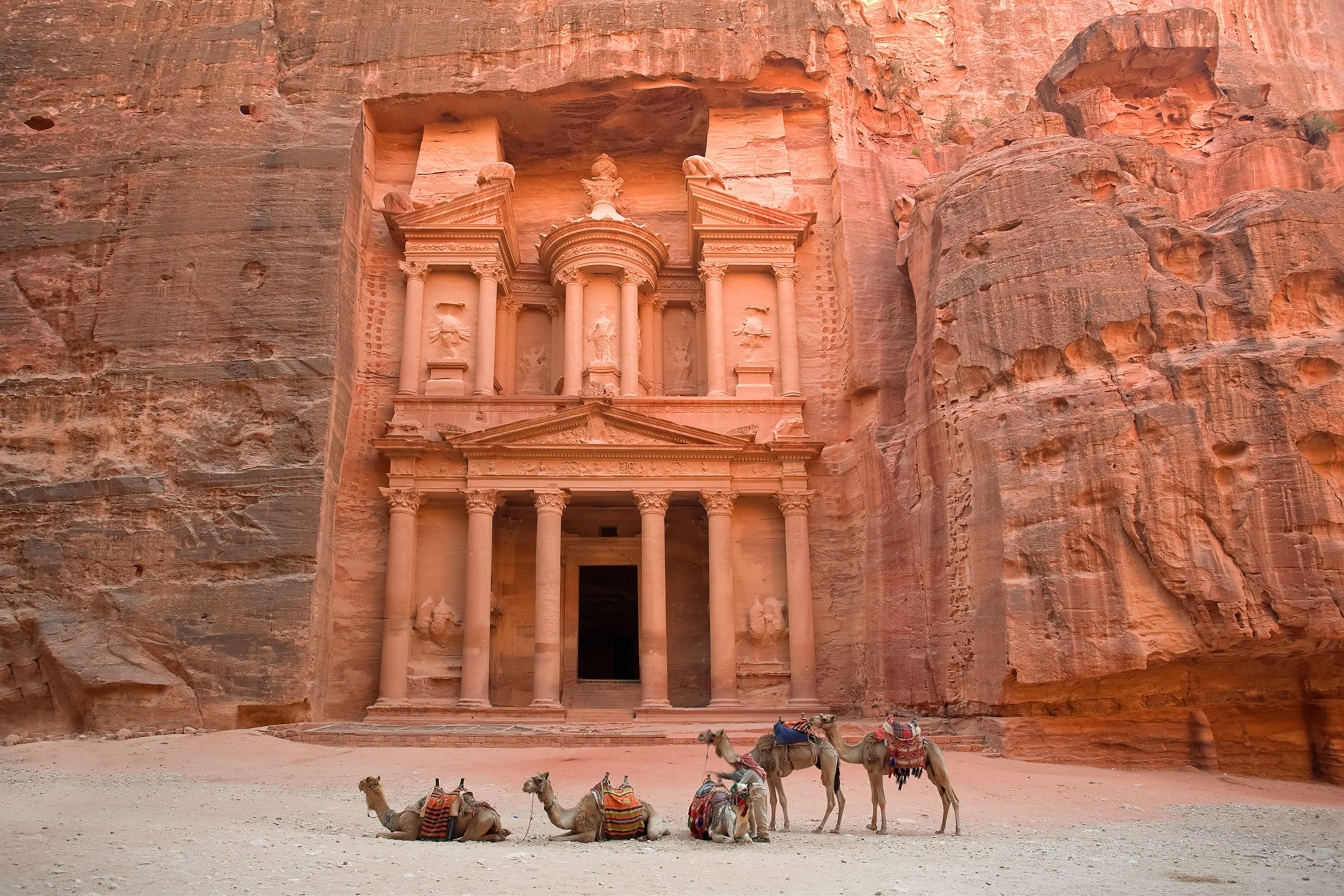
The name “Al-Khazneh,” meaning “The Treasury” in Arabic, originates from local Bedouin legends.
According to one tale, an Egyptian Pharaoh created the Treasury to hide his wealth during his pursuit of Moses.
Another legend speaks of ancient treasures hidden within the urn atop the façade.
Therefore, Bedouins shot at the urn, hoping to release the riches, but it is actually solid stone.
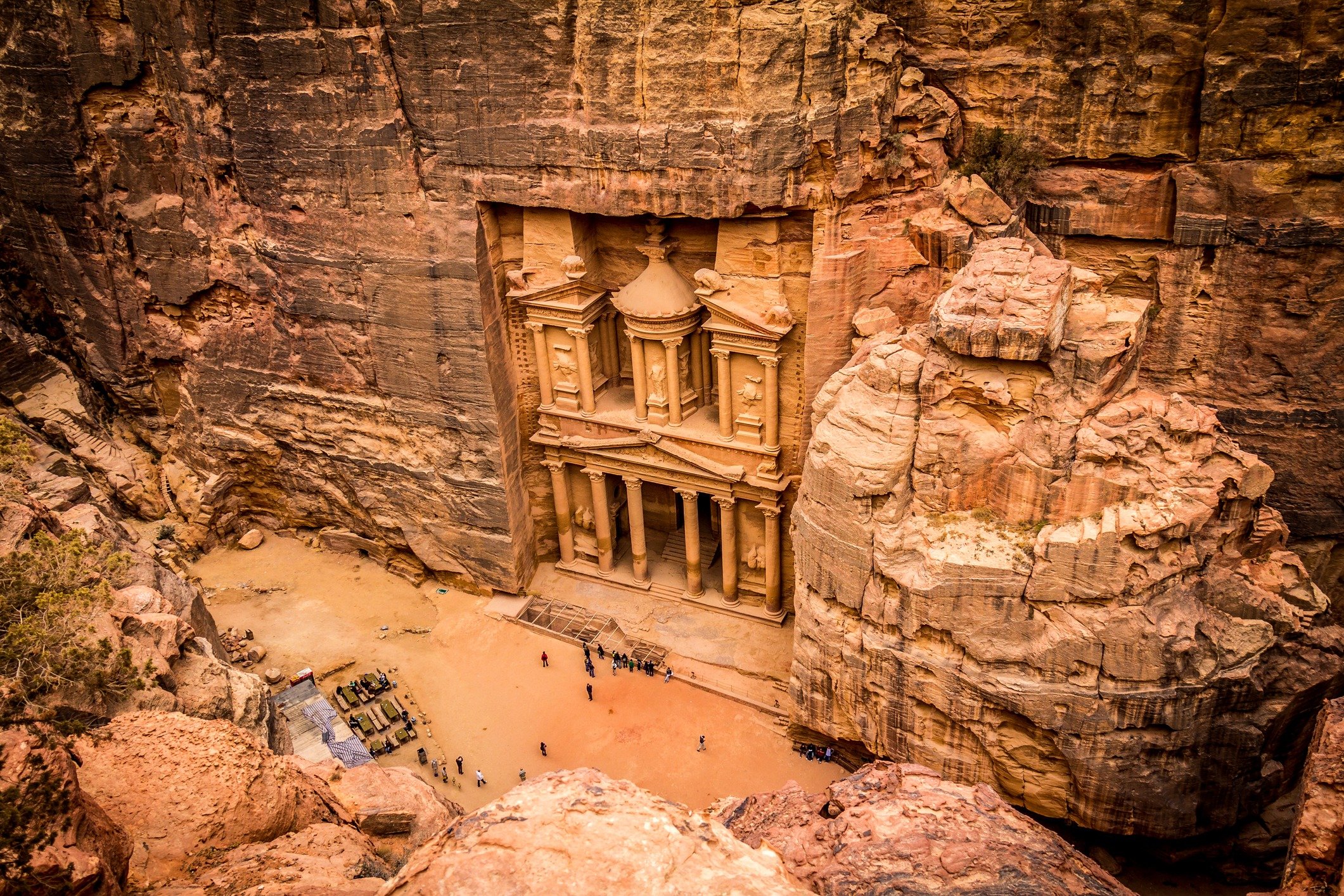
The Treasury’s façade blends Greek and Near Eastern styles, with Corinthian columns and intricate sculptures.
The upper level features a broken pediment with a central tholos, adorned with Corinthian columns and intricate sculptures.
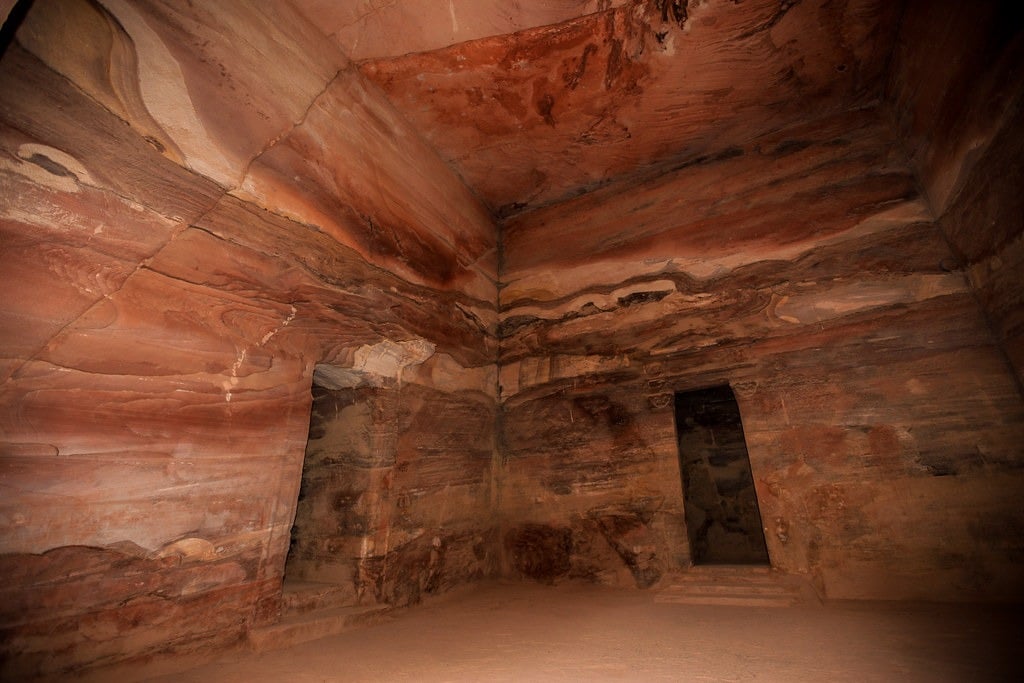
Figures of mythological beings, like dancing Amazons and eagles symbolizing the journey of souls, decorate the building.
Statues of the twin gods Castor and Pollux guard the entrance. Inside, the main chamber is simple, with three smaller rooms.
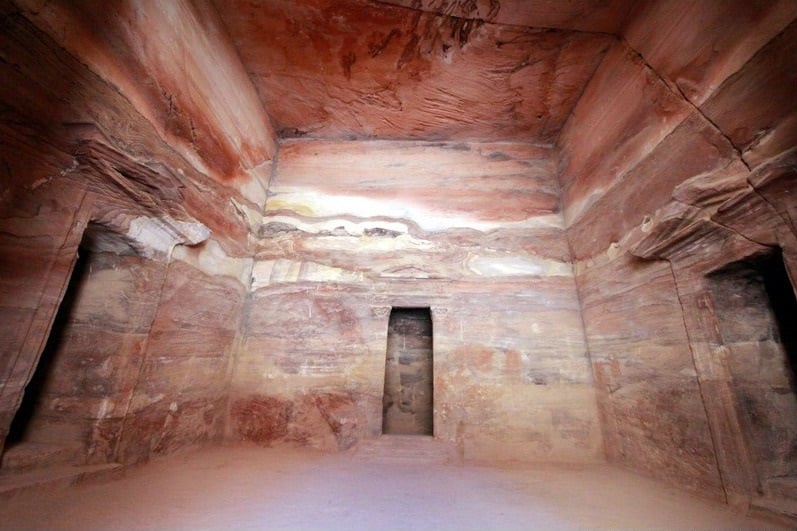
In stark contrast to its ornate exterior, the interior of Al-Khazneh is relatively plain, consisting of a main chamber and three antechambers.
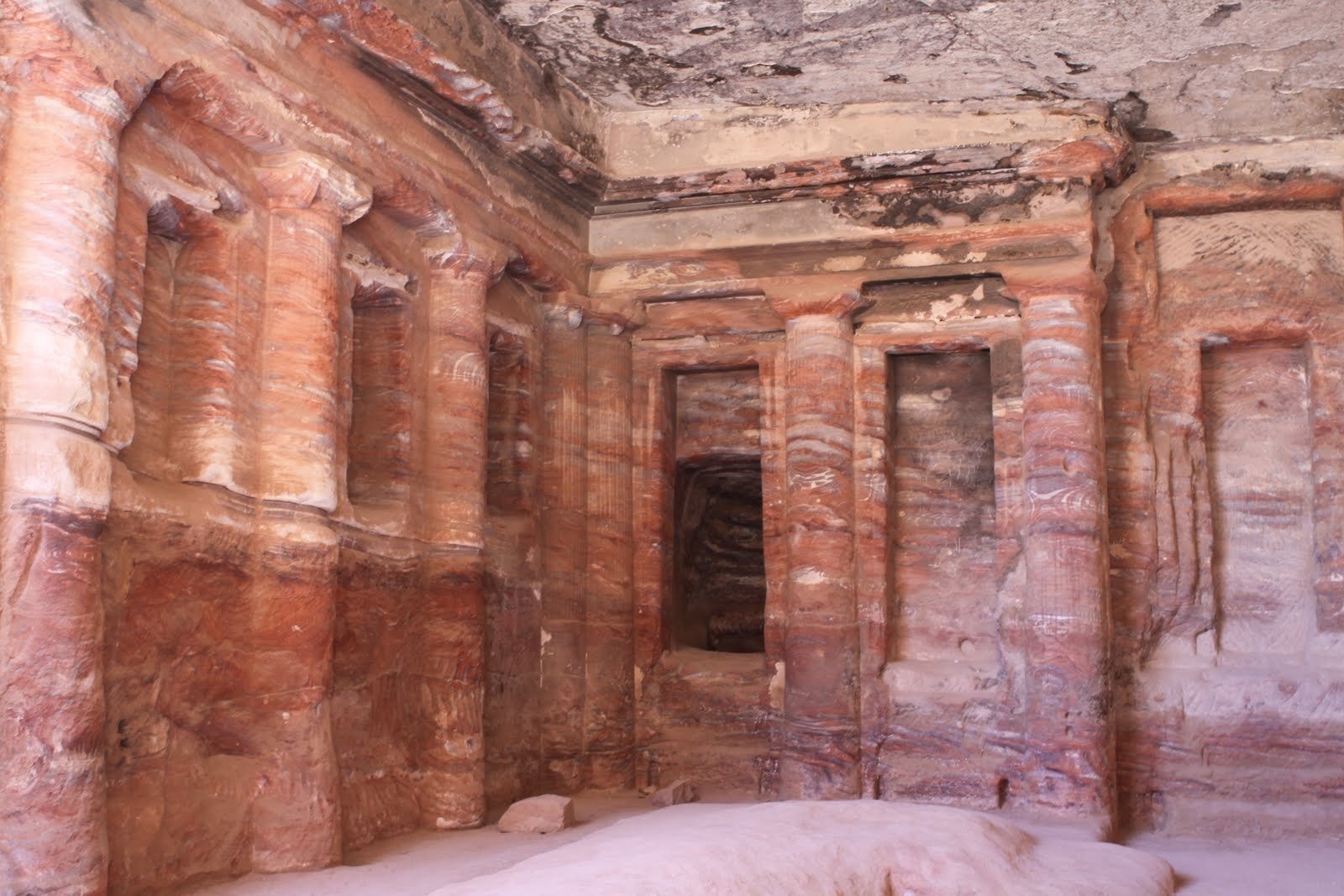
The Royal Tombs
The Royal Tombs are a series of grand facades carved into the cliffs.
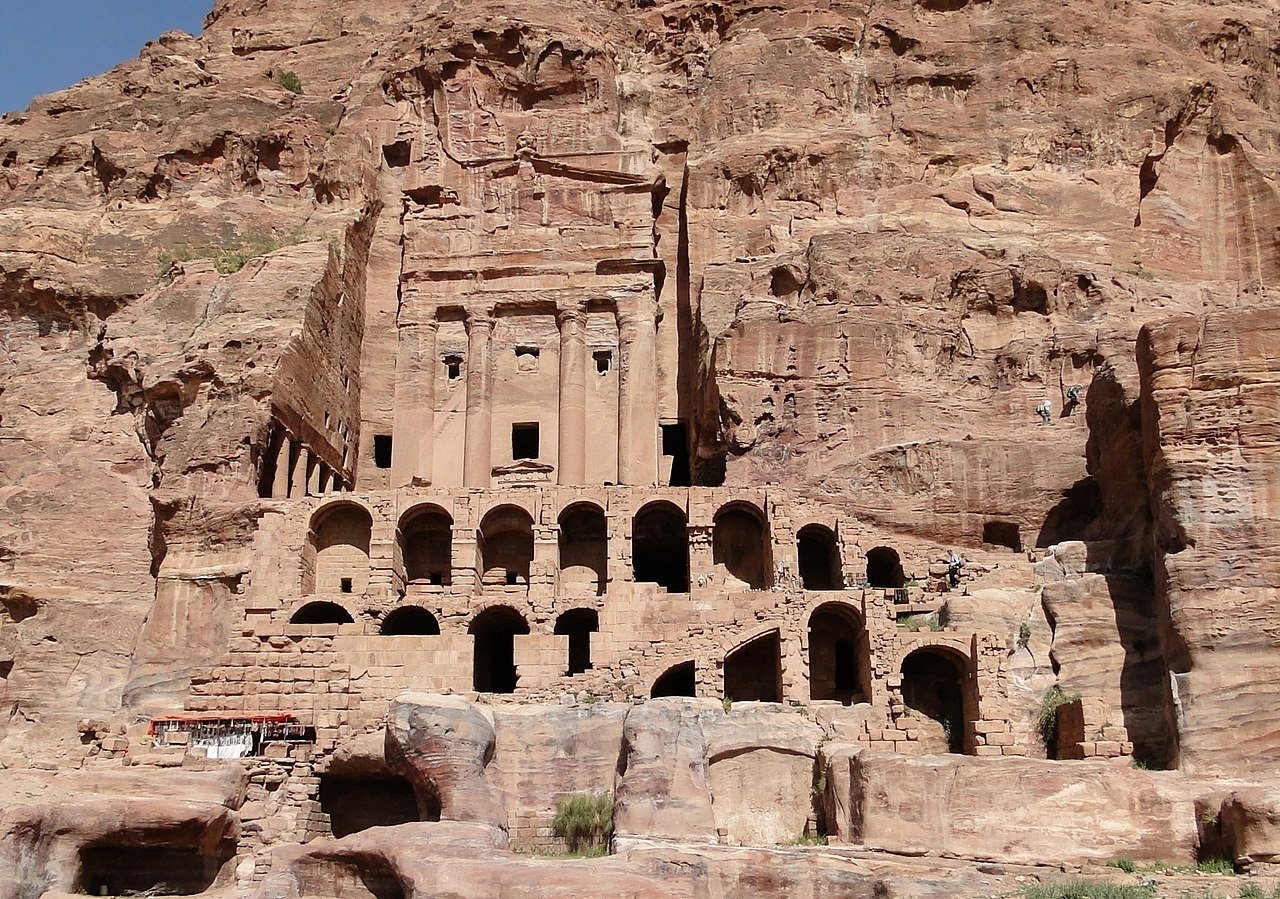
Among them are the Urn Tomb, which later became a church; the Silk Tomb, named for its rich, swirling colors; and the Palace Tomb, resembling a Roman palace.
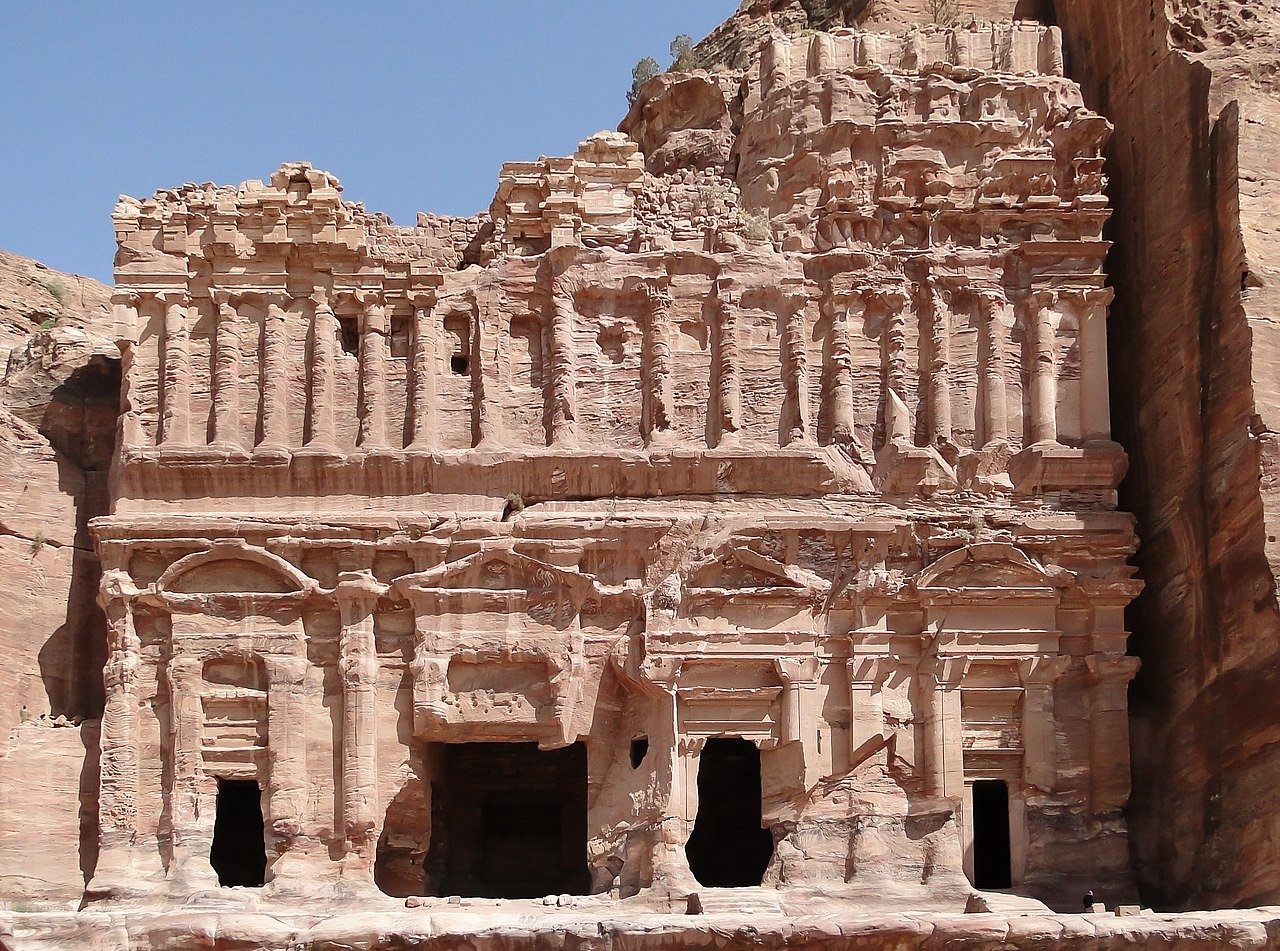

The Roman Theater
Petra’s Roman Theater is an enormous structure carved into the hillside, capable of seating around 8,000 people.
Originally Nabatean, it was expanded by the Romans after they annexed Petra.
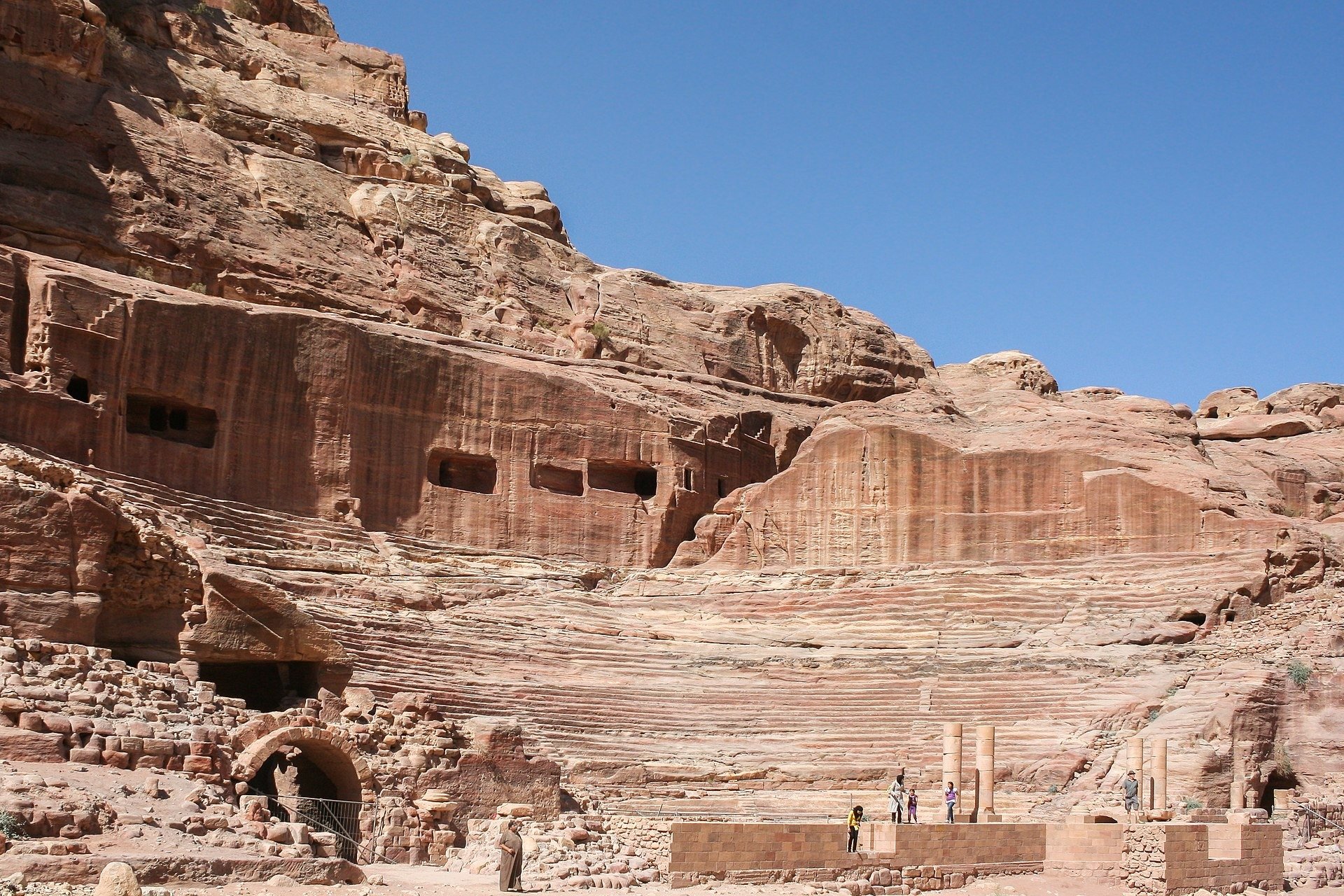
The Great Temple
The Great Temple, once a grand public building, is now partially restored.
It features a large courtyard, a grand staircase, and several smaller rooms.
Excavations have revealed intricate carvings and architectural details, showing us Petra’s social and religious life.
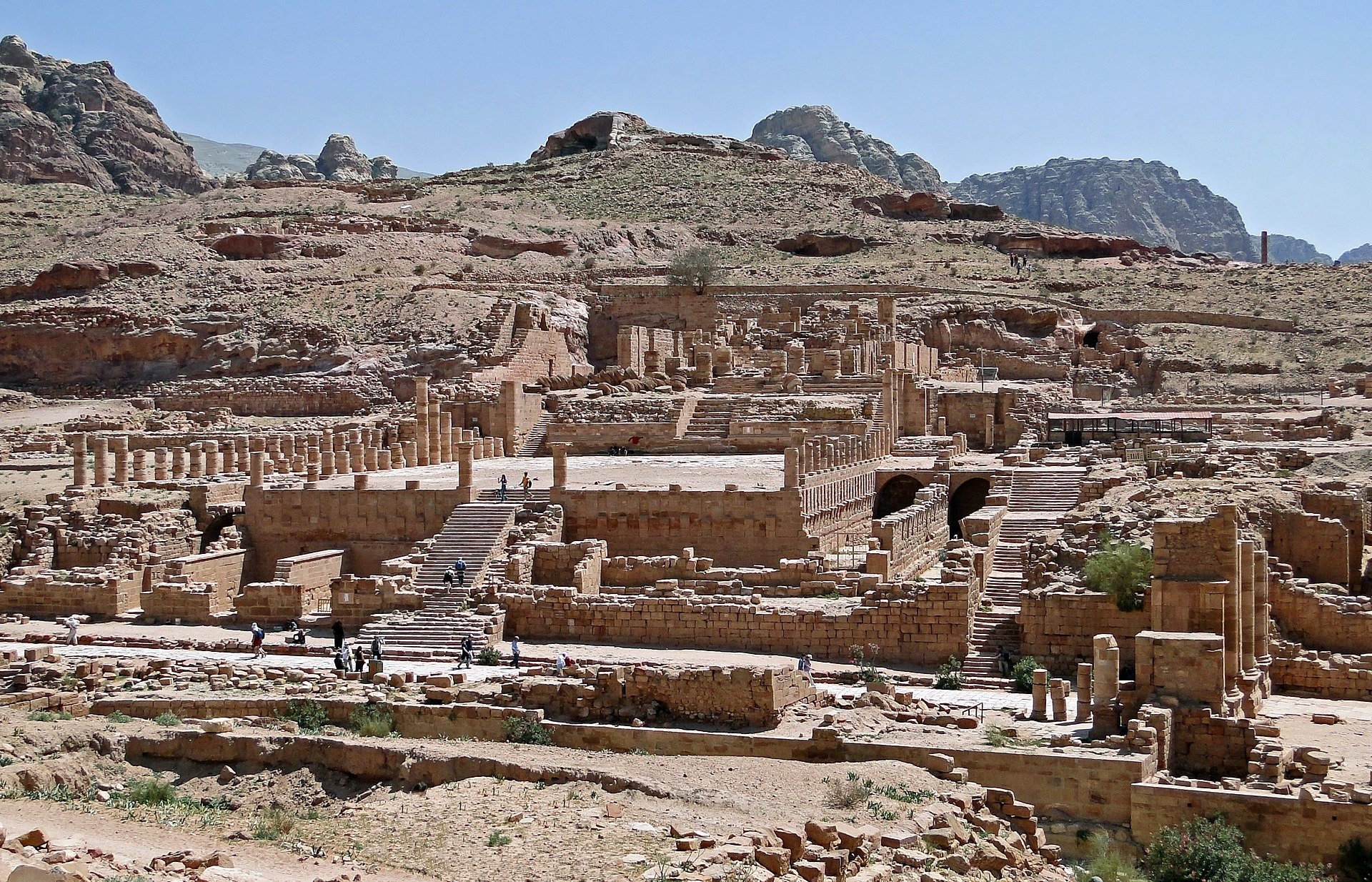
The Garden Temple
The Garden Temple was built in the 1st century AD.
It is set amidst lush gardens, offering a tranquil contrast to Petra’s often dramatic landscape.
The temple’s design reflects a blend of Nabataean and Roman architectural styles, with its elegant columns and detailed carvings.
It is thought to have been used for religious ceremonies and rituals
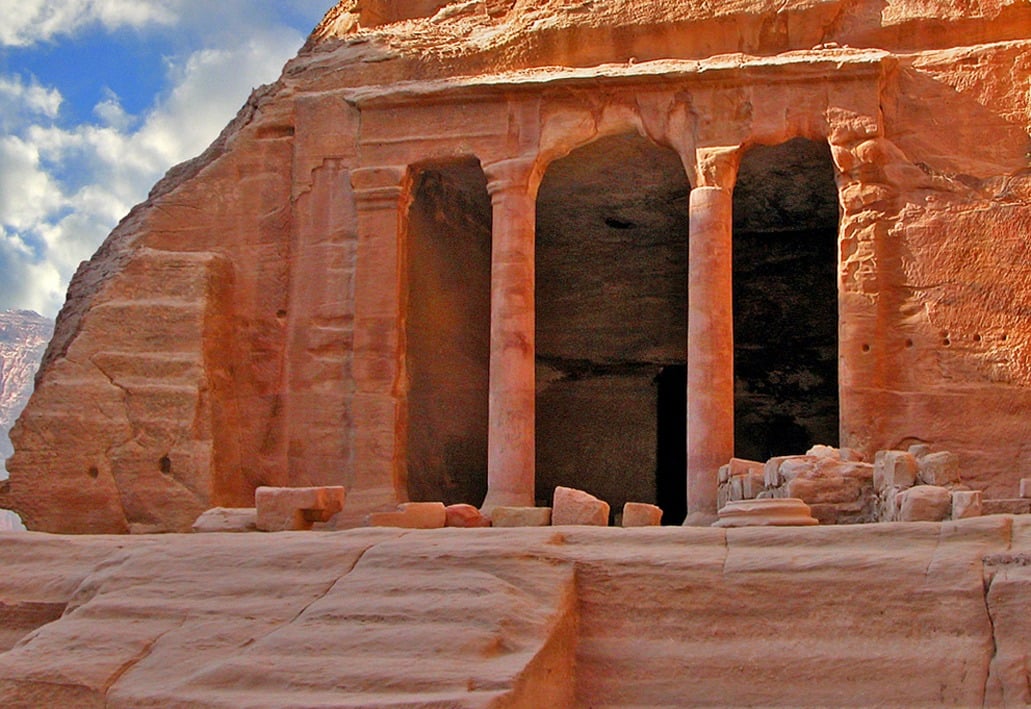
Temple of Dushares
The Temple of Dushares is one of Petra’s most significant religious structures, dedicated to the chief deity of the Nabataeans, Dushares.
Dating back to the 1st century AD, this temple features a grand facade with intricate columns and carvings that reflect both Nabataean and Hellenistic influences.
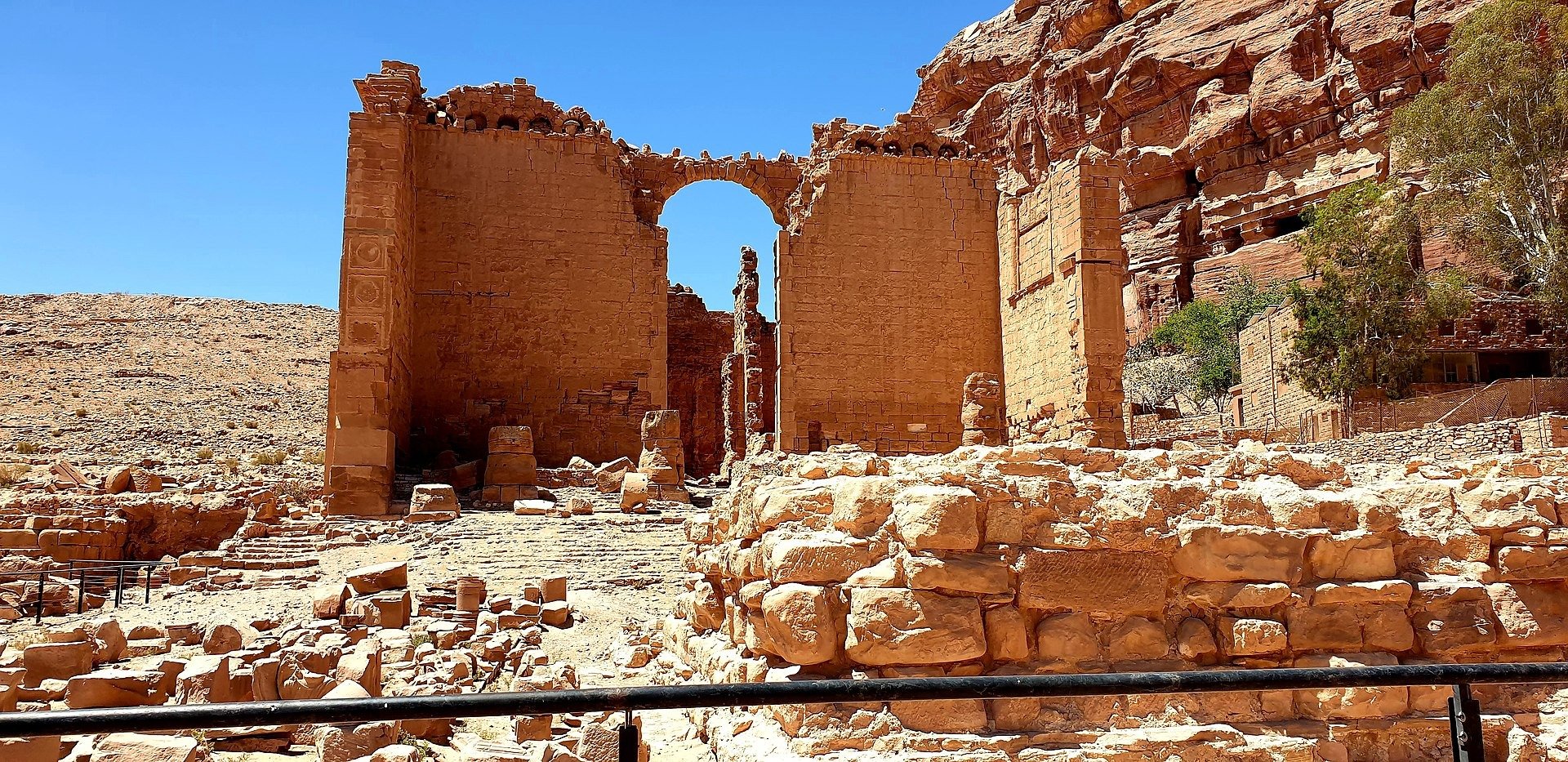
Alwaeira Castle
Perched on a rocky outcrop in southern Jordan, Alwaeira Castle, or Qasr Al-Wa’irah, dates back to the 12th century Crusades.
Built by the Crusaders, the castle features thick stone walls and a strategic layout, blending European and local architectural styles.
It served as a crucial defensive stronghold against Saladin’s forces.
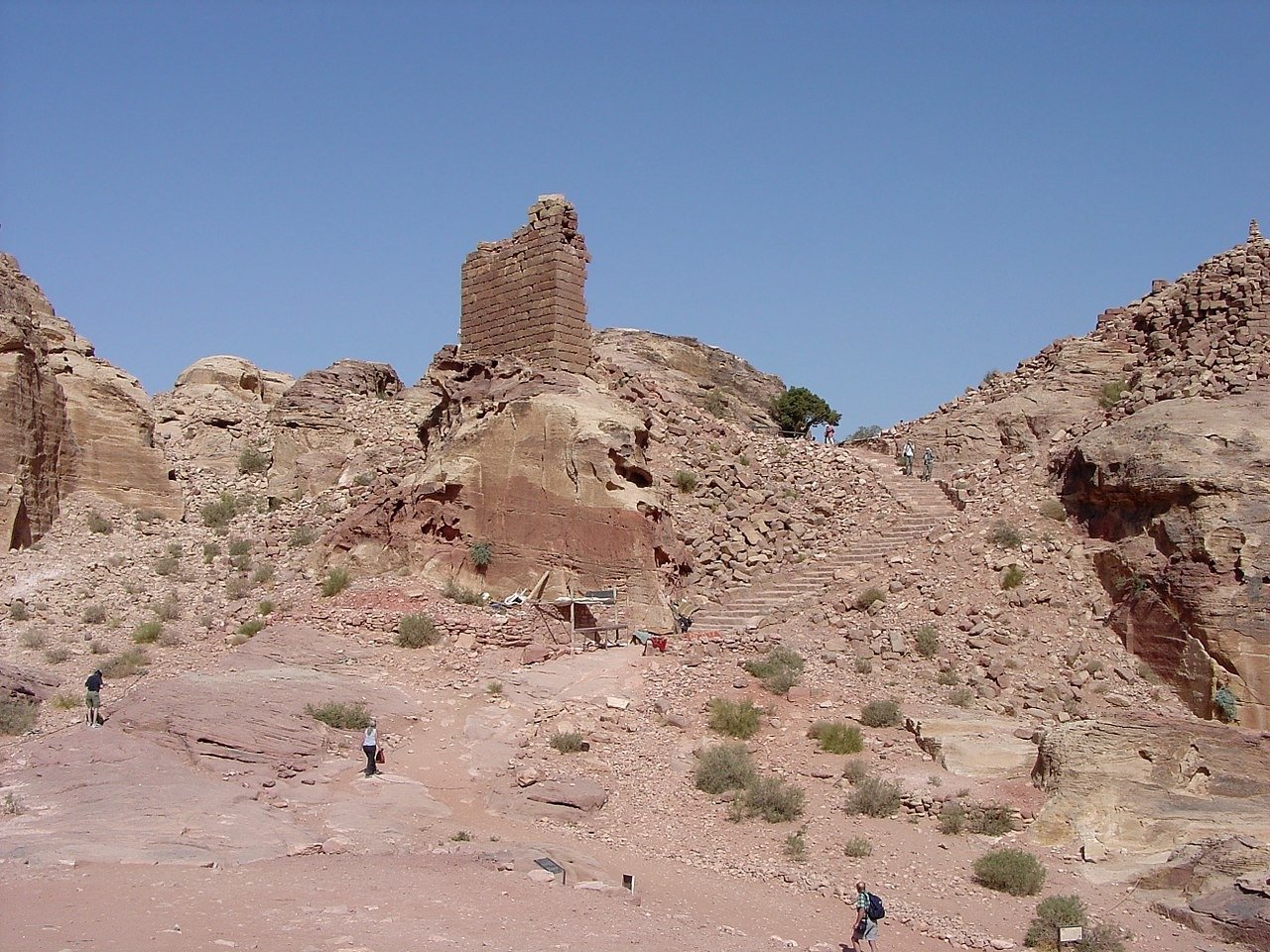
The “Street of Facades”
This narrow, winding street is lined with intricately carved rock-cut tombs, each adorned with elaborate facade.
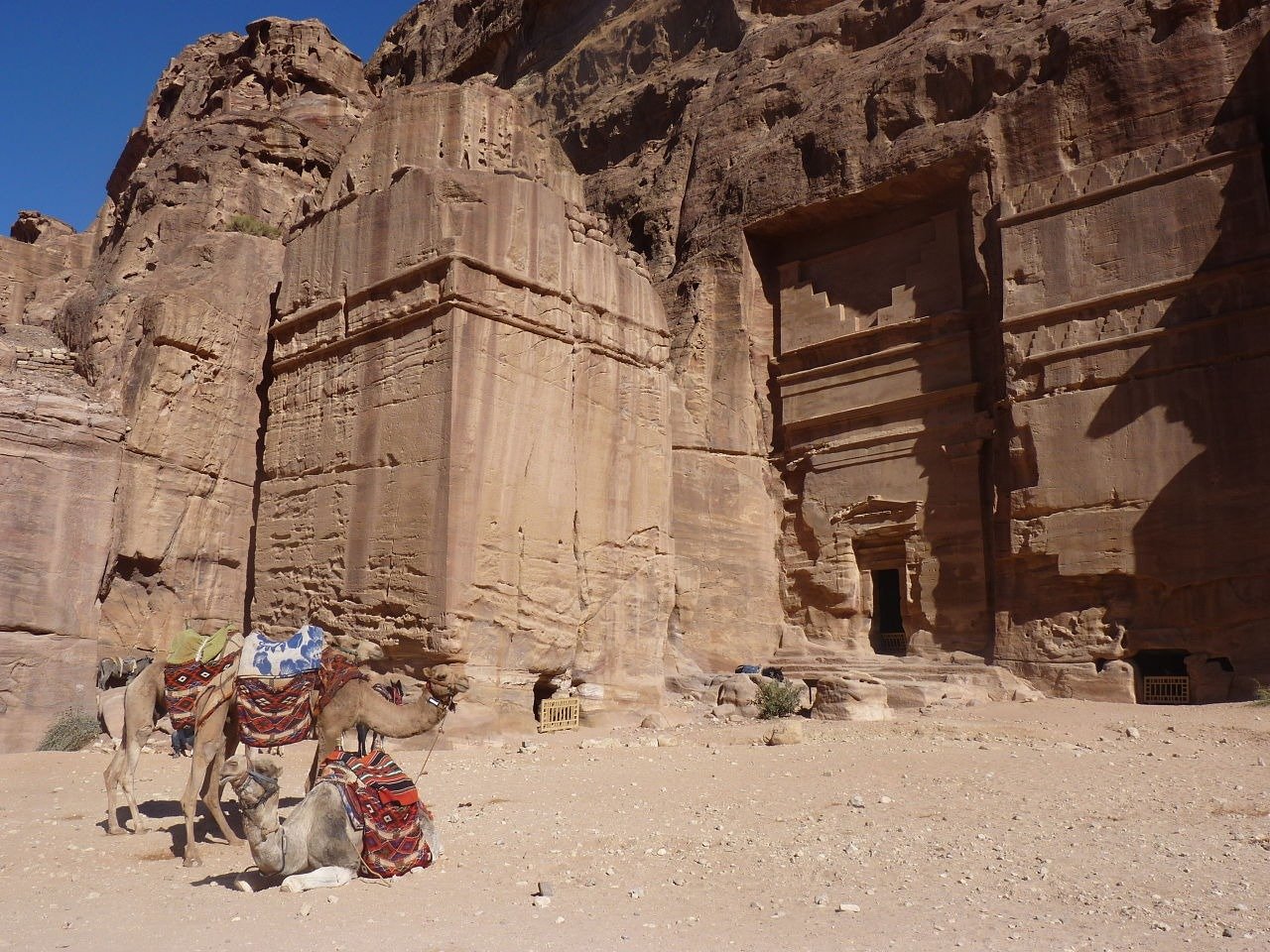
The Hadrian Gate
The Hadrian Gate, also known as the Temenos Gate, is a striking monument located at the entrance of Petra.
It was built in honor of Emperor Hadrian’s visit to the city in AD 129.
It features three arches adorned with decorative carvings, including intricate floral motifs and symbolic representations.
The Hadrian Gate once served as a ceremonial entrance to Petra
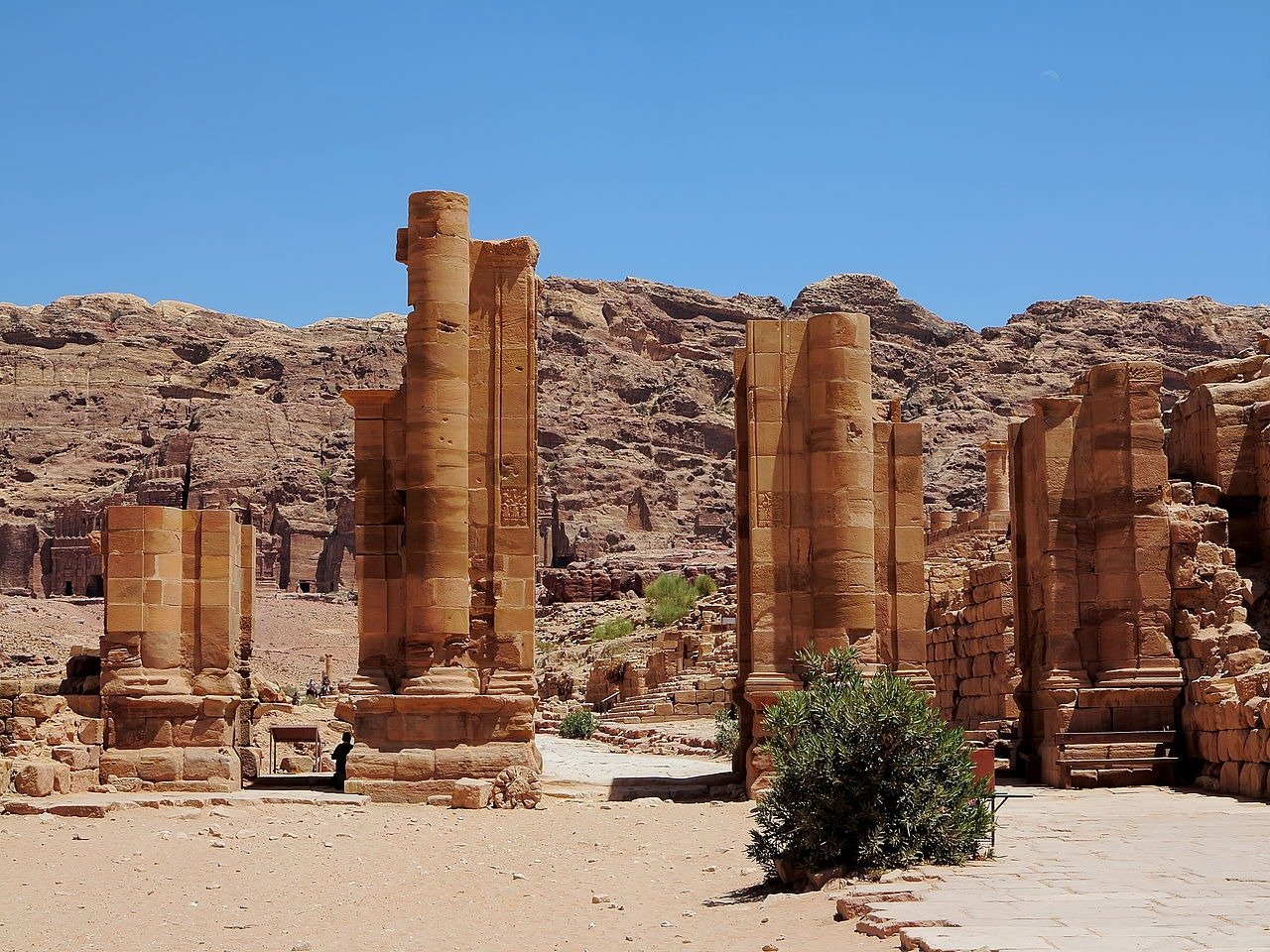
Rock graves
The Rock Graves in Petra are an intriguing collection of burial sites carved directly into the sandstone cliffs.
These ancient tombs date from the 1st century BC to the 2nd century AD.
They feature simple yet striking facades, often adorned with geometric patterns and inscriptions.
The graves vary in size and complexity, reflecting the social status of the individuals buried within.
Many of these rock-cut tombs are accessed through vertical shafts or narrow passages.
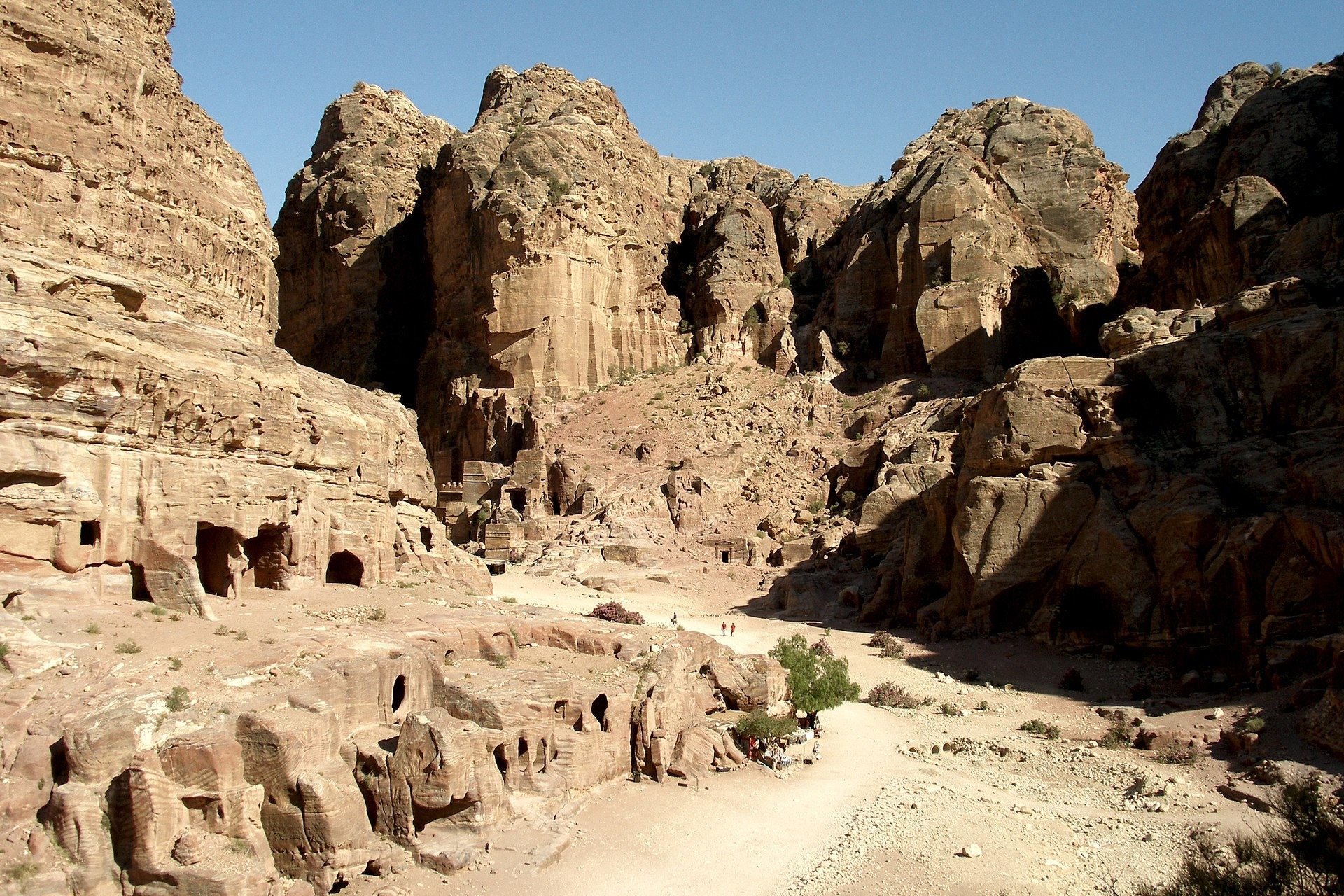
Al-Khazneh has appeared in many films, TV shows, and video games
It gained fame in the 1989 movie “Indiana Jones and the Last Crusade” as the location of the Holy Grail.
It has also featured in PBS documentaries, the SciFi miniseries “Dune,” and the video game “Assassin’s Creed.”
